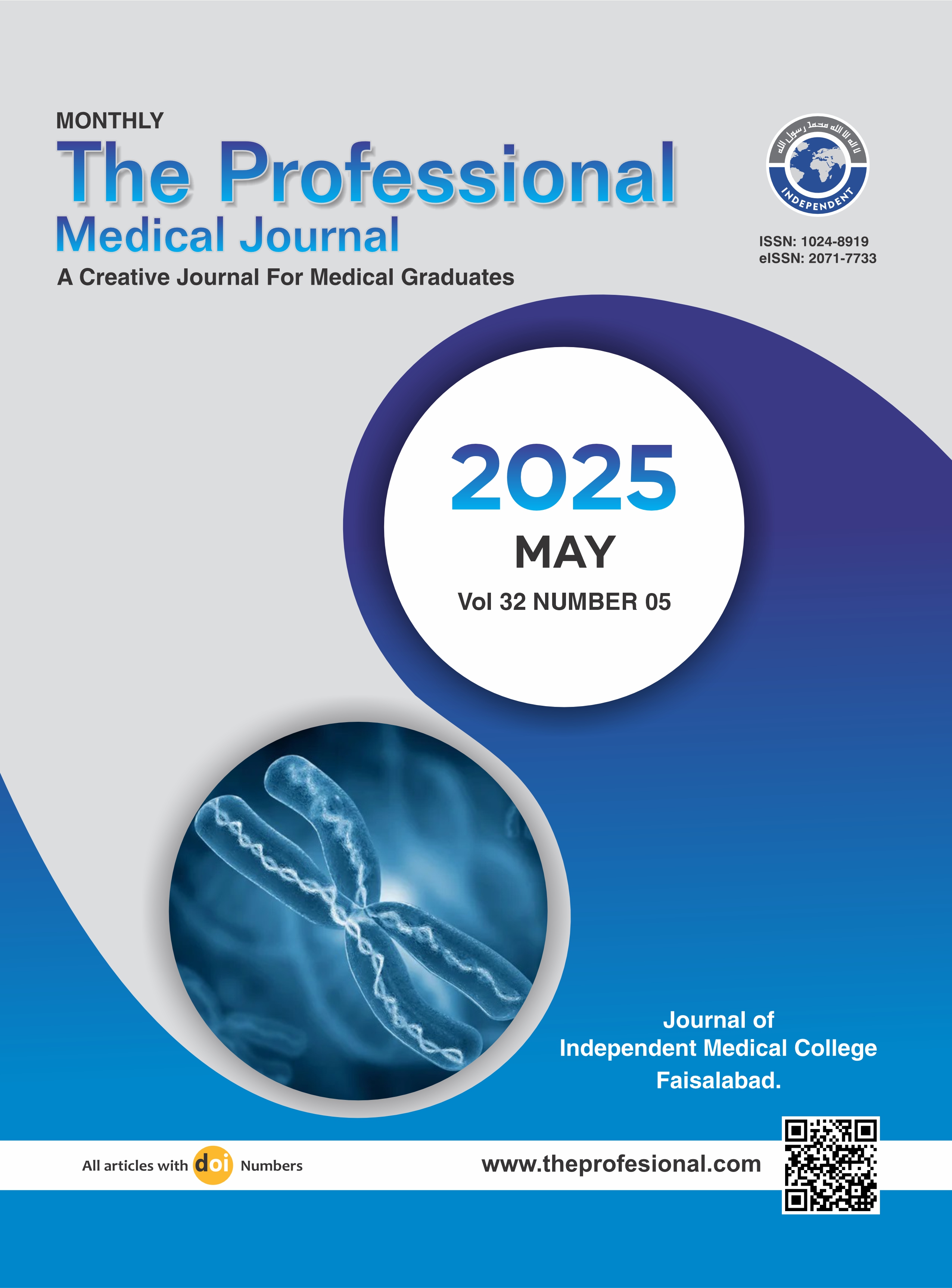Spectrum of clinical manifestations of renal tubular acidosis in children presenting at a Tertiary Care Hospital.
DOI:
https://doi.org/10.29309/TPMJ/2025.32.05.8879Keywords:
Chloride, Renal Tubular Acidosis, Sodium, Tiredness, UrolithiasisAbstract
Objective: To determine the spectrum of clinical manifestations of renal tubular acidosis (RTA) in children. Study Design: Cross-sectional study. Setting: Department of Pediatrics, National Institute of Child Health, Karachi, Pakistan. Period: October 2023 to September 2024. Methods: A total of 124 children aged 1 month to 12 years, and presenting with RTA were analyzed. Demographic, clinical, laboratory and imaging parameters were noted. Chi-square test, and independent sample t-test were applied for the comparison of data, taking p < 0.05 as statistically significant. Results: In a total of 124 children, 72 (58.1%) were male. The most frequent presenting complaints were loose stool, failure to thrive, and dehydration, noted in 71 (78.9%), 65 (72.2%), and 42 (46.7%) children, respectively. Bone deformities were observed in 50 (40.3%) children. Renal ultrasound revealed structural abnormalities, and urolithiasis in 12 (9.7%), and 40 (32.3%) children, respectively. RTA types were distal, and proximal in 90 (72.6%), and 34 (27.4%) children, respectively. Gender was found to have significant association RTA types (p=0.032). Comparison of laboratory parameters evaluation with respect to RTA types revealed significant patterns for chloride (p=0.005), and sodium (p=0.003). Conclusion: Distal RTA was the most common form of RTA. Loose stool, failure to thrive, and dehydration were the most common presenting features, while urolithiasis and structural abnormalities were identified in a significant proportion of children.
Downloads
Published
Issue
Section
License
Copyright (c) 2025 The Professional Medical Journal

This work is licensed under a Creative Commons Attribution-NonCommercial 4.0 International License.


